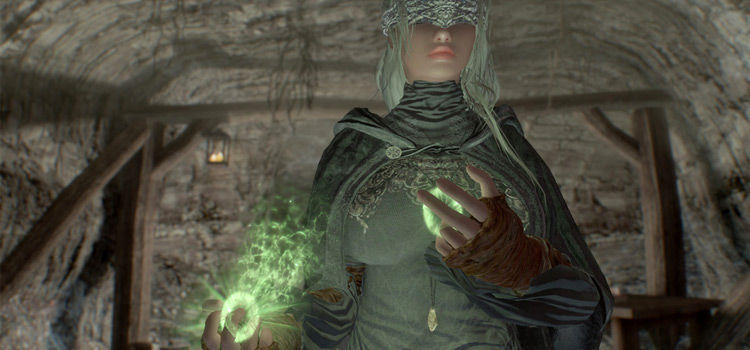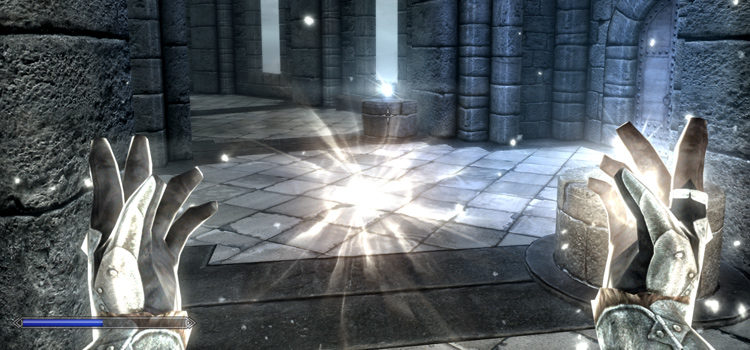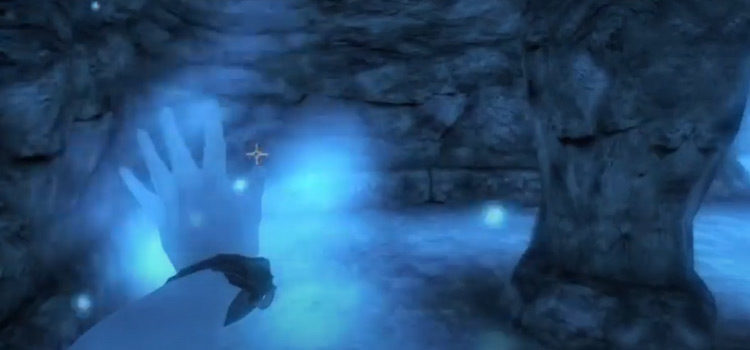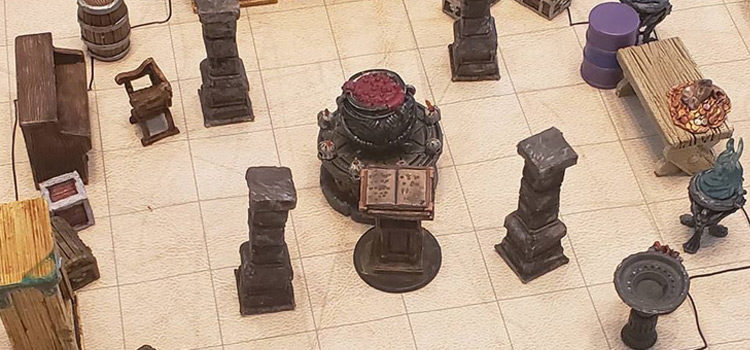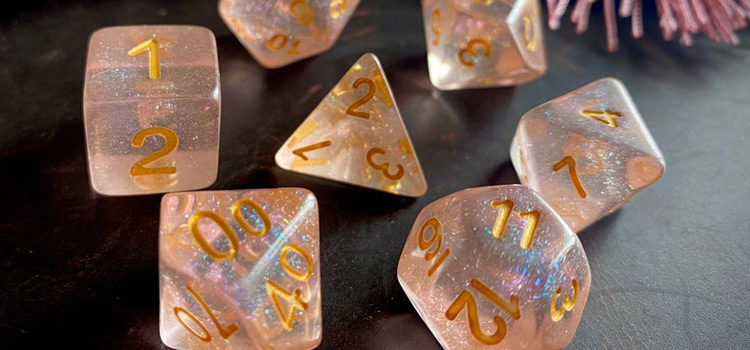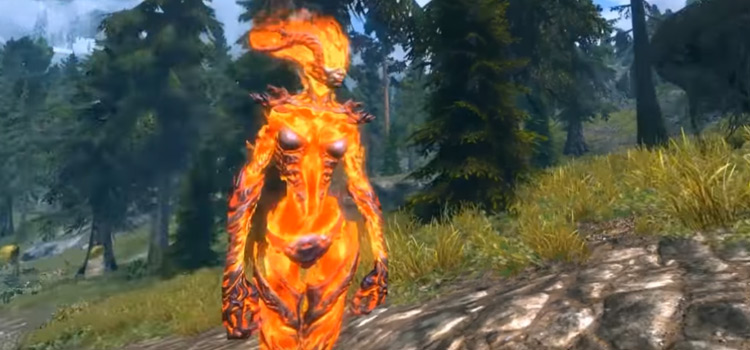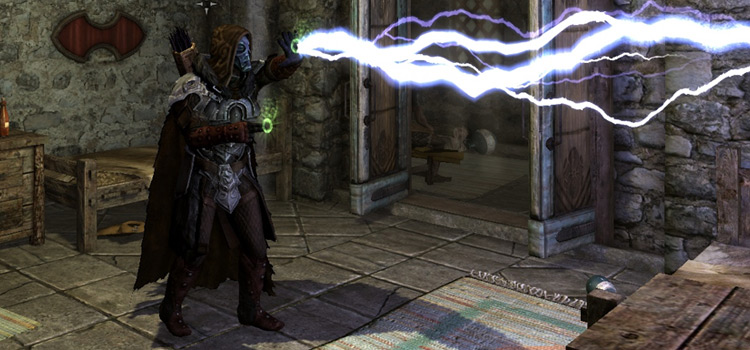20 Best Illusion Spells in D&D 5e
This post may contain affiliate links. If you buy something we may get a small commission at no extra cost to you. (Learn more).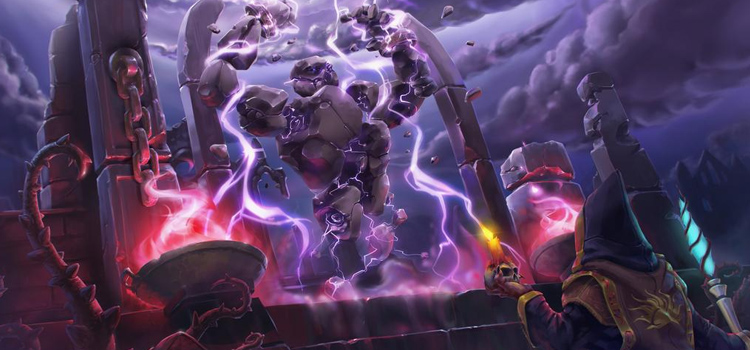
Illusion spells offer some of the most creative spells in Dungeons and Dragons. Players who have imaginative minds to shape their fantasy worlds will fall in love with spells from this school.
However, there is a caveat to Illusion magic.
Creatures that are smart enough to figure out what is (or isn’t) an illusion can often make the spells seem lackluster.
Additionally, they’re limited to not only the player’s creativity, but how the Dungeon Master interprets these illusions and has the affected creatures act sensibly to them.
20. Creation
Source: Player’s Handbook p.229
Creation does exactly what it says – you get to create material such as vegetable matter, stones, precious gems, and minerals.
It comes with a catch, however, as the illusory material will only last for a set duration (anywhere from a full day to about a minute). And you cannot use any materials created by this spell as a material for another spell.
19. Fear
Source: Player’s Handbook p.239
The school of Illusion magic offers some fantastic crowd control spells, and Fear is no different.
Giving spellcasters a way to not only scare away enemies near them, but also forcing them to drop whatever they are carrying, can be a huge play in a fight.
Additionally, because the spell lasts for a full minute (if they can’t break line of sight of course), on an open battlefield you will get a lot of usage out of this spell, potentially making a big threat completely disappear.
18. Shadow Blade
Source: Xanathar’s Guide to Everything p.164
A very Skyrim-esque spell, Shadow Blade allows you to get up close and personal with a shadowy blade that can deal 2d8 psychic damage on a hit, scales with Dexterity. And you can even throw it in a pinch.
For the entire duration of the spell, you can re-use your bonus action to have the sword reappear in your hand if you dropped it or threw it. So you won’t have your hands full when also trying to cast spells.
17. Phantasmal Force
Source: Player’s Handbook p.264
Spells like these allow you to get creative and figure out the most logical (or illogical) way to manipulate the area you’re in.
Which can be a powerful tool in the mind of a creative player.
Because the spell deals such low damage (1d6), I placed the spell lower on the list than other similar spells, but remember how powerful a game of creativity can be.
16. Minor Illusion
Source: Player’s Handbook p. 260
Another spell to test your creativity, and for free at that.
It has many more restrictions due to it being a cantrip, but it’s immensely handy in the right hands.
Take a look at this thread for some creative examples.
15. Disguise Self
Source: Player’s Handbook p.233
A powerful roleplaying tool in any campaign, Disguise Self allows you to look completely different. Clothes, armor, weapons, and anything else on you look entirely different.
Using this spell well can make role-playing more entertaining, as well as offering unique solutions to situations by just being someone else.
14. Invisibility
Source: Player’s Handbook p.254
Invisibility is almost always useful in some way.
And being offered at level 2 (with some restrictions) is pretty great!
You can’t attack or cast spells while this is active, but the spell lasts for an hour. So you can get into a lot of trouble while it’s active.
13. Hypnotic Pattern
Source: Player’s Handbook p.252
Illusion magic offers a lot of crowd control abilities, and Hypnotic Pattern is no different.
Being able to charm any number of creatures in a 30ft cube is great, plus they become incapacitated and their movement drops to zero.
Just like most charms, the spell ends when they take damage or are startled out of it. But it can still buy some turns in combat, or make a quick escape outside of combat.
12. Phantasmal Killer
Source: Player’s Handbook p.265
Being able to prey on the fears of your enemies is probably one of the spookiest things you can do.
And this spell lets you do just that.
Not only is the target frightened for the full duration, but they also have to make additional Wisdom saving throws or take 4d10 psychic damage! Truly spooky.
11. Seeming
Source: Player’s Handbook p.274
One of the neater Illusion spells on our list, Seeming does a lot for a single spell.
You can change the appearance of any number of creatures within range. Unwilling targets must succeed a Charisma saving throw to be unaffected by this spell.
The spell disguises physical appearances and whatever they’re wearing and you can slightly change their height and width, but you can’t rearrange their limbs (i.e. if they have two arms, you can’t give them a third).
Seeming has a lot of utility when keeping up appearances is necessary. Imagine having to break into a bank in Waterdeep. You can all pose as guards with this spell!
Or cross enemy lines by posing as the enemy, with them being none the wiser.
10. Greater Invisibility
Source: Player’s Handbook p.246
Remember when I talked about how neat Invisibility was?
What if you could have it last the same duration, but they can also cast spells and attack as normal?
There’s not much else to this spell, and you can’t grant it to multiple creatures like the weaker version, but it is pretty powerful in its own right.
9. Major Image
Source: Player’s Handbook p.258
There are so many spells on this list that are limited by creativity, and this spell is one of them.
You can create an image of an object, creature, or some other phenomenon in a 20-foot cube to fool your enemies. You can give it a smell, sounds, even temperature changes (though it cannot ever deal damage).
If you’re creative and heavy into role-playing, this spell is much more rewarding as a player. The sky is the limit!
8. Mirror Image
Source: Player’s Handbook p.260
Mirror Image offers a fantastic tool to keep yourself alive, offering three extra duplicates that mimic your actions and can take the blows for you.
It’s some real Dragon Ball Z kinda stuff.
Although they don’t bring the utility of other duplicate-like spells, being able to brush off up to 3 attacks is valuable, especially in more difficult combat scenarios.
7. Hallucinatory Terrain
Source: Player’s Handbook p.249
This spell won’t offer you anything in combat (at least usually), but it offers you another great way to fool your enemies or other NPCs.
The huge radius of the spell (150-foot cube) means the area you’re changing is pretty big and can make a difference role-playing wise.
However, it is a bit situational in its applications.
6. Silence
Source: Player’s Handbook p.275
Ah, the sweet sound of silence.
Why is this spell ranked so high? Well, as almost all spells include some form of verbal component to cast them, Silence takes that ability away immediately.
In high magic campaigns, or against an enemy who casts a lot of spells will be severely crippled in a silent area like this if you can keep them confined to the 20-foot area at least.
The biggest downside to this spell is the small area that it creates. I feel like if it could be cast at a higher slot with a larger area, it would make this spell potentially one of the best in Illusion magic.
Also, how is this an illusion? Just curious.
5. Mirage Arcane
Source: Player’s Handbook p.260
Most of the terrain-altering spells are all a hit-or-miss based on the campaign you’re in, or how creative you get with your spells.
Mirage Arcane is no different, but it does offer some things other spells don’t:
- It’s a huge area. A full square mile of illusion!
- It lasts for ten full days, without concentration.
- It also turns the terrain into difficult terrain if you choose, making combat challenging unless everyone figures out the spell is an illusion.
Once again, it comes down to how creative you can be, and the situation at hand. But it makes great for roleplaying!
4. Mislead
Source: Player’s Handbook p.260
Back into the weird Dragon Ball Z kind of spells, Mislead lets you create a duplicate of yourself while you become invisible and run around.
You can even have it move double your speed, as well as communicate and act in whatever way you want.
While your double is present, you can see through its eyes and hear through its ears as if you were there, swapping between yours and its senses as a bonus action.
You still can’t attack or cast spells without breaking invisibility. But this spell does let you get into some hijinks if you want to “keep up appearances” while also sneaking off somewhere.
3. Mental Prison
Source: Xanathar’s Guide to Everything p.161
More spooky spells!
Preying on the greatest fears of your enemies probably gives me too much joy.
You get to force a target to make an Intelligence saving throw or they take 5d10 damage and are surrounded by dangerous, terrifying hazards.
While the spell doesn’t truly trap them in place, it does make them think they’re trapped, which can keep them at bay for a while.
They also cannot see anything beyond the illusion. So you can move around as you wish to surround your prey before striking.
If they try to move out of the hazards or attack them, they take an additional 10d10 psychic damage and end the spell.
2. Illusory Dragon
Source: Xanathar’s Guide to Everything p.157
Who needs Conjuration magic when you can summon a shadow dragon?
You create a Huge shadowy dragon in an unoccupied space, that frightens all enemies that see it if they fail a Wisdom saving throw.
You can spend your bonus action to move the dragon up to 60 feet, as well as using its breath weapon that deals 7d6 damage of a chosen type in a 60-foot cone if they fail an Intelligence saving throw (dealing half on a successful save).
Your shadow dragon also cannot be attacked, and automatically succeeds all saving throws. It is also immune to conditions and damage.
Creatures can examine the shadow and determine it is an illusion with an Intelligence check, but this only gives them advantage on saving throws from the dragon’s breath weapon.
1. Simulacrum
Source: Player’s Handbook p.276
Up until this point, we’ve made a lot of mirror images or false illusions.
But how about we create a physical duplicate of someone?
With simulacrum you shape a form of ice and snow into the figure of a beast or a humanoid, that takes on all of their physical features as well as attributes (but has half the hit points).
It’s always friendly to you and those you designate as friendly and will obey all spoken commands issued to it.
Your icy boy can’t level up or become more powerful, nor can it ever regain spell slots.
You also can’t have more than one at any one time. But you can repair yours if you have access to an alchemical laboratory.
This spell is powerful because you get a free new party member! Being able to duplicate another PC or a powerful NPC is a huge asset to high-level Dungeons and Dragons campaigns.
